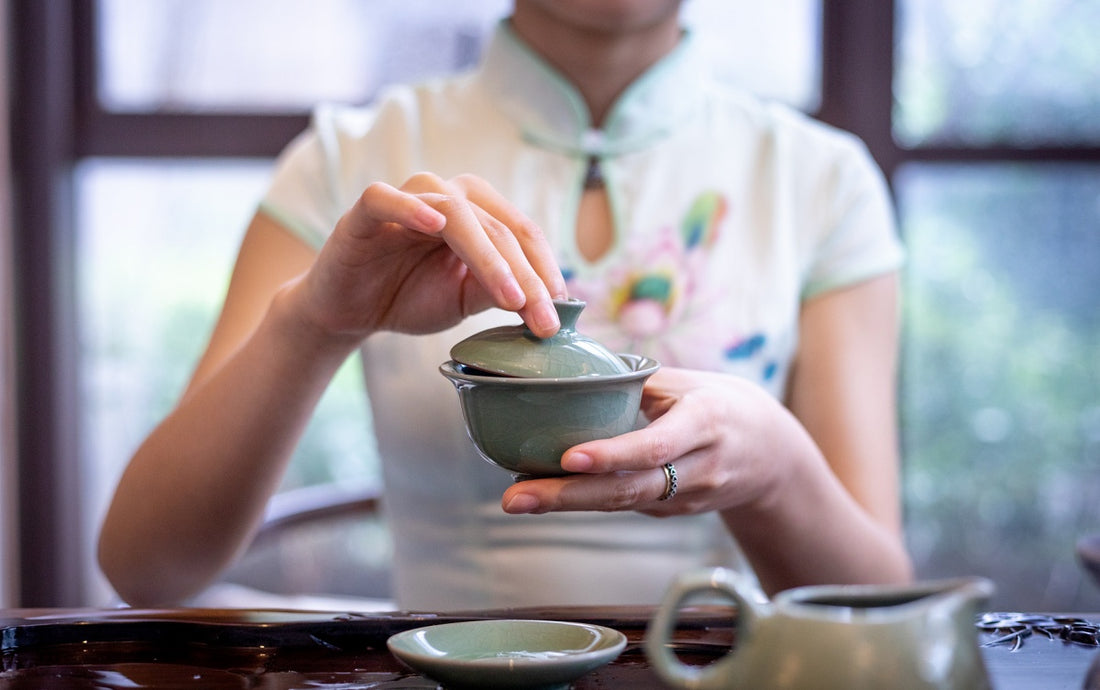
How to Use and Maintain Gaiwan
ZenBrew Tea StudioThe Gaiwan, a traditional Chinese multi-purpose tea vessel, boasts a simple yet elegant design and allows for flexible, diverse usage. Not only does it highlight the color, aroma, and taste of the tea, but it also carries a unique charm rooted in Eastern tea culture. By using a Gaiwan correctly and caring for it diligently, you can enhance the taste of your tea and bring extra refinement and enjoyment to your tea-drinking experience. In the article The Benefits of Brewing with Gaiwan, we have told you in detail the benefits of brewing tea with Gaiwan. And in this article, ZenBrew Tea Studio will provide comprehensive guidance on how to select, use, and maintain your Gaiwan, so you can savor the delightful interplay of tea and teaware.
How to Choose the Right Gaiwan
1. Capacity

Consider whether the Gaiwan’s capacity suits your daily needs. A 100–150 ml Gaiwan is ideal for personal use. For sharing tea with friends or family, opt for capacities of 150–200 ml or more. If the Gaiwan is too small, it may not hold enough tea; if it’s too large, handling and pouring can become cumbersome or wasteful.
2. Rim Shape and Curve

The shape and curve of the Gaiwan’s rim affect both heat retention and ease of pouring. A wider rim and moderate curve make it easier to pour tea without spilling. If you often find tea leaves flowing out while pouring, try adjusting the angle between the lid and the bowl, or choose a Gaiwan with a slightly more constricted rim.
3. Material Comparison




• Porcelain Gaiwan: Offers even heat distribution and good heat retention, providing a pure taste for most types of tea. The smooth glaze also makes it easier to clean.
• Glass Gaiwan: Allows you to observe tea leaves unfurling, providing a stunning visual experience, though heat dissipates more quickly. Especially suited for green or floral teas with high aroma and beautiful leaf appearance.
• Zisha (Purple Clay) Gaiwan: Less common in the market, but like a Yixing teapot, purple clay can absorb some aromas and subtly retain flavors. It’s especially suitable for fermented or aged teas.
• Metal/Wooden Gaiwan: Metal versions need extra attention to prevent rust, and wooden ones are prone to moisture or cracking. These materials are often chosen for special occasions or decorative purposes and demand more rigorous maintenance.
How to Properly Use a Gaiwan
1. Master the “Three-Finger Grip”
The most common way to hold a Gaiwan is using three fingers: pinch the bowl’s sides with your thumb and middle finger, while lightly securing the lid’s center or knob with your index finger.

• Stability: This grip helps maintain balance and prevent the Gaiwan from slipping.
• Burn Prevention: Position your thumb and middle finger on areas that aren’t too hot, while your index finger merely keeps the lid in place.
• Avoid Common Mistakes: Holding the Gaiwan by the bottom with your palm can lead to burns, and pressing the entire lid with your finger can cause the lid to shift. The three-finger grip offers both safety and maneuverability.
2. Angle and Rhythm When Pouring Tea

• Keep Your Wrist Steady: Begin by gently tilting the Gaiwan to let the tea flow out smoothly. Avoid sudden or forceful pouring to prevent tea leaves from escaping or splashing.
• Adjust for the Final Drops: As the tea volume decreases, you may increase the tilt to pour out the remaining tea, ensuring every drop of tea is utilized.
3. Brewing Different Types of Tea: Water Temperature and Time
• Green Tea / Floral Tea: Use water at around 80–85°C (176–185°F). Keep steeping times brief (10–20 seconds) for a fresh, crisp taste.
• White / Yellow Tea: Brew at 85–90°C (185–194°F) for about 20–30 seconds, preserving their delicate aroma and sweetness.
• Oolong Tea: Water can be 90–95°C (194–203°F), sometimes boiling. Quick, repeated infusions help release floral, fruity, or roasted notes, depending on the tea type.
• Black / Dark Tea (Heicha): Use near-boiling or fully boiling water at 95–100°C (203–212°F), with longer steeping times (30 seconds or more) to yield deeper color and richer flavor.
For more information about how to use gaiwan with different teas, please refer to this article Gaiwan Pairs with Different Teas.
Daily Cleaning and In-Depth Maintenance
1. Key Points for Routine Cleaning

• Wash Promptly: Rinse the Gaiwan as soon as possible after use to prevent tea stains or food residues from sticking to the walls.
• Soft Cleaning Tools: Use a soft cloth or sponge rather than abrasive tools, to avoid scratching the glaze or surface of the Gaiwan.
• Avoid Harsh Chemicals: Stay away from strong acids, bases, or corrosive cleaners, as these can damage the Gaiwan’s material or finish.
2. Deep Cleaning and Stain Removal
• Baking Soda Soak: Dissolve a small amount of baking soda in warm water and soak the Gaiwan for 10–15 minutes, then wipe gently with a soft cloth. Baking soda effectively tackles stubborn tea stains without harsh abrasives.
• Vinegar or Lemon Juice: Natural acids in vinegar or lemon juice help break down stains. Mix with warm water and soak for about 10 minutes.
• Special Material Considerations: Metal or wooden Gaiwans should not be soaked for long periods. Clean them quickly and dry thoroughly to prevent rust or cracks.
3. Drying and Storage
• Ensure Proper Ventilation: After cleaning, let the Gaiwan air dry or gently pat it dry with a clean cloth. Store it in a cool, well-ventilated area, away from direct sunlight.
• Prevent Knocks and Collisions: If you own multiple Gaiwans, place them with adequate space or padding in between to avoid damage from knocks.
• Avoid Unwanted Odors: Keep the Gaiwan away from strong-smelling items (e.g., spices, mothballs) to prevent it from absorbing odors that can affect future brews.
Common Questions and Helpful Tips
1. How to Avoid Burning Your Hand While Pouring?
• The three-finger grip significantly reduces the risk of burns. If you’re new to it, practice with slightly cooler water first or wait a few seconds for the tea to cool down a bit before pouring.
• Using a Gaiwan with slightly thicker walls or a silicone wrap can further protect your fingers from heat.
2. Why Does the Gaiwan Slip Out of My Hand?
• This is often due to unfamiliarity with the lid-bowl coordination or an incorrect grip. Practice the pouring motion with an empty Gaiwan until you gain confidence.
• Also, ensure your hands and the Gaiwan are free of tea, oil, or any slippery residue.
3. What If the Gaiwan Cracks or Deforms?
• Avoid extreme temperature changes, such as taking it from a warm indoor setting to freezing outdoor temperatures or placing it in icy water immediately after use.
• If you notice small cracks or chips, consider discontinuing use to prevent contamination and further damage.
Join the Gaiwan Family
For years, we have been dedicated to promoting the culture of the gaiwan and advocating for brewing tea with this elegant vessel. We have sourced a variety of gaiwans that embody both cultural heritage and artistic beauty from renowned ceramic hubs such as Jingdezhen, Dehua, and Yixing, bringing them to tea enthusiasts worldwide (you can check out here).
The Gaiwan embodies the elegance of Eastern tea culture, offering a minimalistic yet refined way to appreciate the subtle wonders of tea. By selecting the right material and capacity, mastering a proper grip and pouring technique, and maintaining careful cleaning habits, you can ensure every brew reveals its distinct color, aroma, and taste. We hope this guide helps tea enthusiasts become proficient in using a Gaiwan, allowing each cup of tea to shine in its purest form. May you find comfort and delight in the subtle harmony of tea and teaware, wherever your tea journey leads you.
